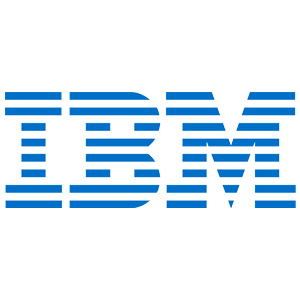
International Business Machines Corporation (IBM®) is an American multinational information technology company that produces and sells computer hardware, middleware and software. The company offers application, technology consulting and support, process design and operations, cloud, digital workplace, and network services, as well as business resiliency, strategy, and design solutions. IBM® uses InfluxDB for three distinct use cases.
Use Case 1: The IBM® Advanced Technology Support team uses InfluxDB for storing, graphing and exploring nmon data and stats captured from AIX and VIOS in JSON format. nmon is a stats gathering tool that has 600,000 downloads. InfluxDB is simple to install and quick to get running which makes it an ideal tool. The team at IBM® sees InfluxDB as a perfect Python client for injecting JSON data and allowing direct access to the data.
Use Case 2: IBM® Trusteer® products help detect and prevent the full range of attack vectors responsible for the majority of online, mobile and cross-channel fraud. IBM Trusteer products deliver a holistic, integrated cybercrime fraud prevention platform. This platform is based on four key principles to help prevent the root cause of fraud, improve the customer experience, reduce operational impact and utilize a global intelligence service. IBM Trusteer Pinpoint Detect now incorporates behavioral biometrics, patented analytics and machine learning for real-time cognitive fraud detection.
The IBM® Trusteer® product line needs to maintain high availability across their entire system in order to fulfill the promise of delivering full protection against online fraud. The team uses DevOps monitoring techniques driven by InfluxDB and Telegraf. Specifically, they use Telegraf to collect operational metrics, store them in InfluxDB and present the metrics and events data to the operations department using a Grafana dashboard. The data collected is infrastructure and application performance data, that allows the Cloud Operations Department to monitor and maintain the whole system, which contains hundreds of virtual servers.
Use Case 3: IBM Power Systems provides their customers with hybrid multicloud infrastructure solutions. Some of their larger POWER9 servers can have up to 192 CPU’s and 64 TB’s of memory. IBM continuously benchmarks their new products to better understand their market positioning. Their R&D teams test all new hardware and software before they go to market. IBM Power Systems uses InfluxDB and Grafana to collect, store and visualize performance data in order to improve performance in workload environments which are always evolving.
Watch the webinar “Discover How IBM Uses InfluxDB and Grafana to Help Clients Monitor Large Production Servers and IBM Benchmark Centers”, featuring Nigel Griffiths from IBM, Ronald McCollam from Grafana Labs, and Russ Savage from InfluxData to learn how you can use InfluxDB and Grafana to improve large production workloads.


